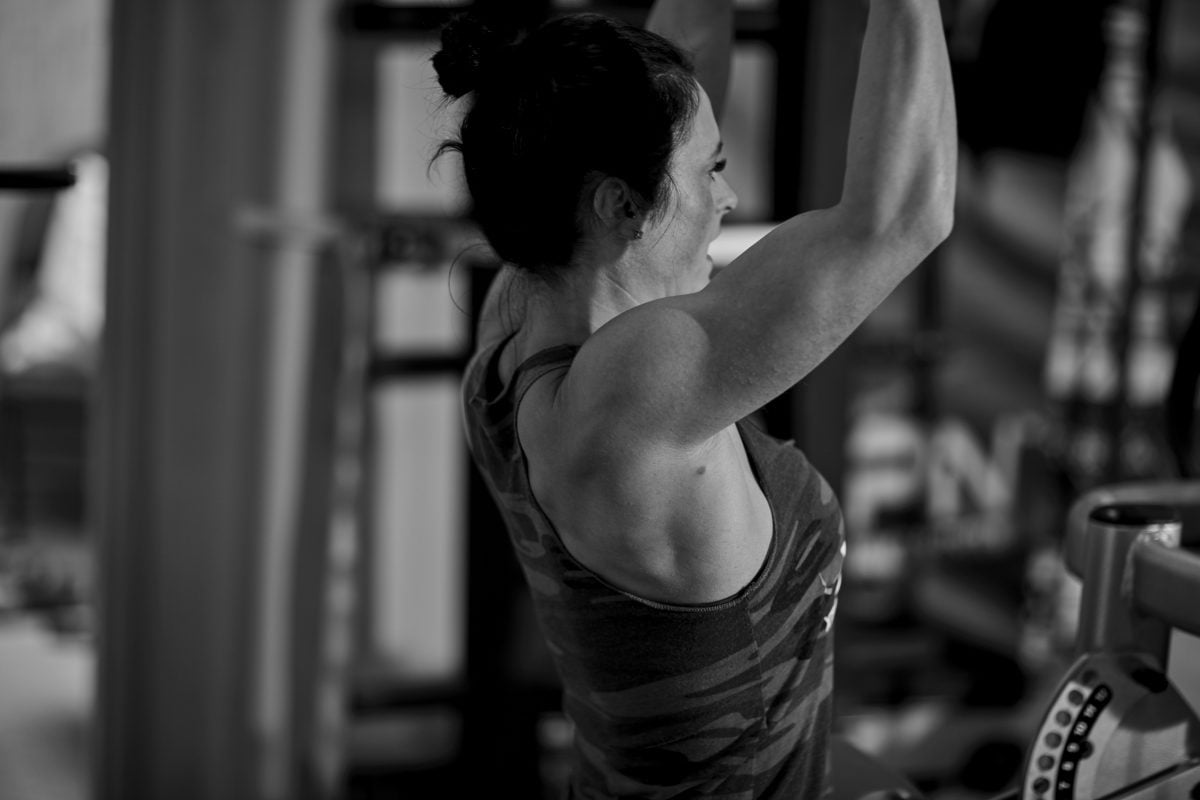Knowledge
The Biceps Compound Movement
Muscle gain, Training

The Biceps Compound Movement
One thing I always believed to be true is that multi-joint, compound movements build the most muscle mass and should constitute the cornerstone of your training programs. I’m not one of these extremists that will tell you that isolation exercises are worthless though. They aren’t. You can definitely build muscle with isolation exercises, even isolation exercises with machines.
But it has been my experience through decades of coaching and training, as well as working/sharing/talking shop with the top guys in our field, that the results from compound exercises (especially if you use more weight in good form) surpass what you can achieve if the bulk of your program comes from isolation work.
Science might or might not agree with me on this, but real-life results speak a lot louder to me in this instance. It has always been my training philosophy to use the greatest proportion of multi-joint exercises you can to get the job done. To me, isolation work should be left mostly to fix a lagging muscle group.
They allow you to put a little bit more adaptive stress on one specific muscle without increasing the demand (neurological and energetic) of the workout too much. They also help you improve the mind-muscle connection with the lagging muscle group, which is often the main reason why the muscle is under-developed in the first place.
If you look at most muscles groups: pectorals, quads, hamstrings/glutes, upper back, deltoids, they all have more than their fair share of big compound movements to choose from.
Pectorals: bench press (DB and bar), incline bench press (DB and bar), decline bench press (DB and bar), dips, etc.
Quads: front squat, back squat, Zercher squat, hack squat, lunges, split squats, etc.
Hams/Glutes: deadlift, sumo deadlift, Romanian deadlift, lunges (longer steps), hip thrust (even though I’m not a big fan, they work), etc.
Upper back: bent over row (DB or bar), Pendlay row, pull-ups (various grips), seal row (DB or bar), etc.
Deltoids: military press (DB or bar), push press (DB or bar), steep incline press (DB or bar), behind the neck press, wide grip upright row to the sternum (DB or bar), etc.
But what about arms?
Triceps have all forms of close-grip bench press (incline, flat, decline, floor, etc.), football bar close-grip bench, reverse-grip bench press as well as triceps dips. But their counterpart the biceps are rarely trained with a compound lift. The closest most people get to using a compound movement for the biceps is when they cheat on their barbell curls!
Of course, every pulling movement (rows, pull-ups, etc.) do work the biceps. But if you are doing these right, you are trying to minimize biceps activation to maximize lats work.
However, those who answer rows and pull-ups to the question “What biceps compound movement can I use?” are very close to the truth!
The Biceps Pulldown
The close-grip lat pulldown can be to the biceps what the close-grip bench press is to the triceps. But you must do it in a way to maximize the use of the biceps. Here are a few pointers:
- Use a very close grip, pretty much as close as you can on the handle. This will greatly diminish the lats mechanical advantage and as such, they won’t be involved as much in the movement.
- Fully extend the elbows but try to keep the shoulders down. Imagine that your shoulder blades are made of rock and cannot move nor up or down at any point in the exercise. Minimizing shoulder blade movement will also decrease lats action, putting more of the stress on the biceps.
- From the top initiate the movement by flexing the biceps. The muscle firing first is the muscle that will do most of the work.
- When you pull, also focus on minimizing the movement of your shoulder blades. Try to pull only with the arms, imagine doing a curl rather than a pull.
This is NOT how you should do a lat pulldown when trying to build your back. In fact, it’s pretty much the opposite of what you should do. But if you want to overload the biceps it’s a fantastic movement. As I mentioned, it is to the biceps what the close-grip bench press is to the triceps.
It will allow you to put more mechanical stress on the biceps than a regular curl. As a first movement in your biceps training it is a great choice.
Why Not A Biceps Seated Row?
While a supinated seated row or barbell row might work, I find it to be inferior to the biceps pulldown. When the arm is raised you actually get a better peak contraction. So, starting the movement with the arms above your head facilitates activating the biceps. Plus, supinated barbell rows are something I have always avoided since Dorian Yates tore his biceps doing it!
Conclusion
Using compound movements allows for a more complete motor unit recruitment and will help you maximize both muscle growth and strength gains. This is the best option to get those adaptations for the biceps. If you are advanced/strong enough you can use the same approach with close-grip supinated pull-ups to take it up a notch.
But remember, do not see this as a back exercise since we are doing everything possible to minimize back action. It should be used as a biceps exercise just like you would use a close-grip bench or dip for the triceps.
– CT